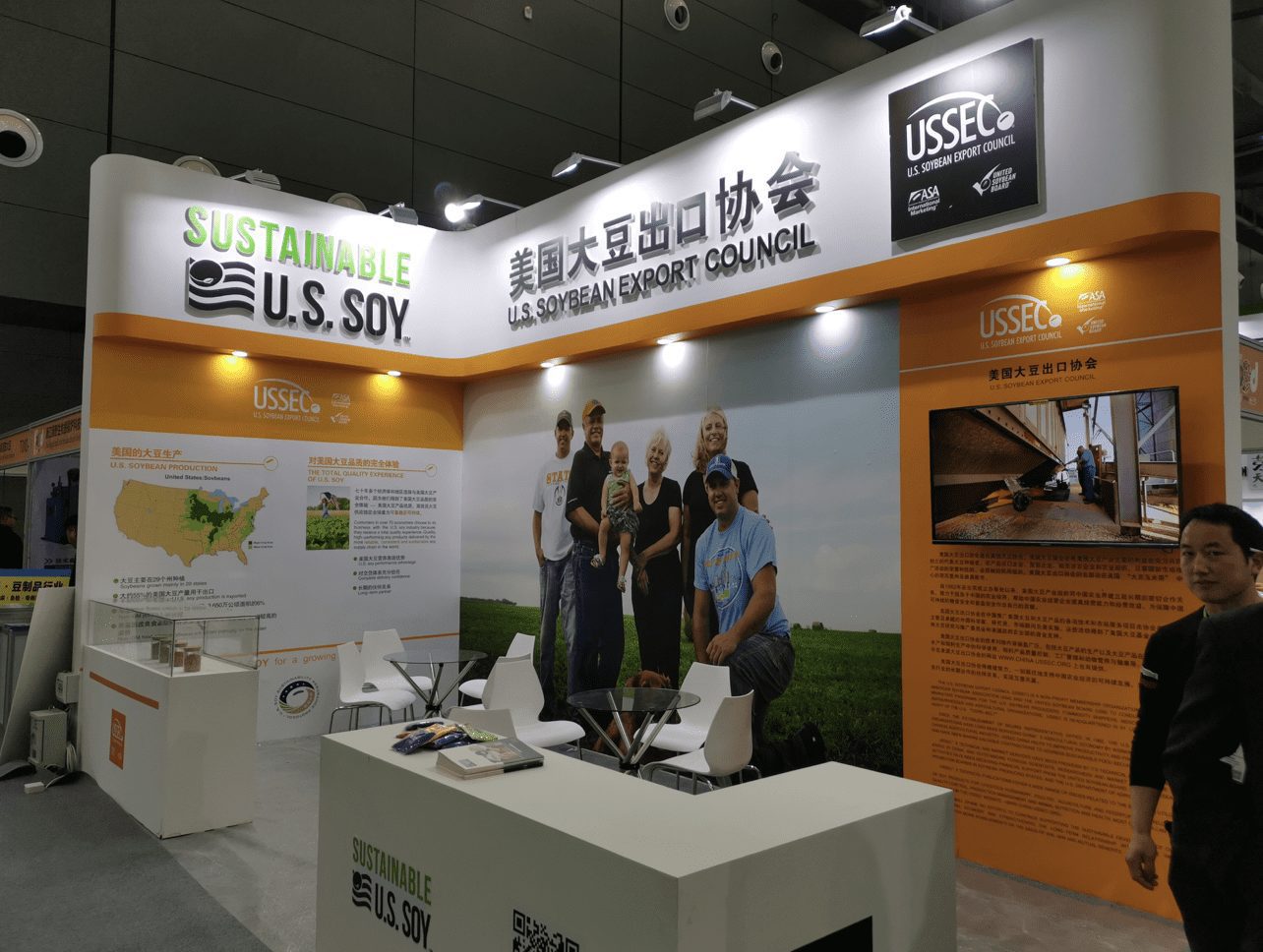The U.S. Soybean Export Council (USSEC) works with customers in multiple global markets to present the advantages of U.S. food beans to soyfood processors and maintain industry relationships. In China, USSEC has continued to leverage its long-term partnerships, recently sponsoring the China International Exhibition for Soy Food Processing Technology and Equipment from April 2 to 4 in Changsha, Hunan Province.
During the exhibition’s opening ceremony, USSEC Marketing Specialist – Value Enhanced Soybeans Jinrong Qian delivered a presentation that introduced the production, trade, and quality and reliability advantages of U.S. food grade soybeans; the U.S. sustainability system; and the U.S. soy family. As she thanked organizer BPCC and other USSEC cooperators in China, Qian stressed that the U.S. soy industry will continue to maintain a good relationship with China as it has demonstrated with continuous market development programs over the past 37 years. Qian also participated in a ribbon‐cutting ceremony. USSEC member and exporter Richland IFC, along with the North Dakota Trade Office, Northern Crops Institute, and ATO Beijing also participated in this event. About 150 people attended the opening ceremony.
Networking was key to this conference as the U.S. soy team introduced the advantage of U.S. food grade soybeans and answered customer questions at the USSEC booth and during lunch and the conference. An evening banquet also allowed valuable interaction time.
On the second day of the conference, Jiwon Kim of the North Dakota Trade Office delivered a presentation to introduce North Dakota food grade soybeans and North Dakota export companies. Dr. Liu of the Northern Crops Institute introduced the importance of soy characteristics in food processing.
Many Chinese soy food processors, especially those who produce fresh soy food such as tofu, soymilk, and dried tofu are not yet aware of the importance of soybean consistency and are currently using mixed varieties in their production. Zero‐tolerance policy on non‐GM soybean is still the biggest obstacle for traders to import U.S. food grade soybeans. Because soybean processing companies export more than half of their products to markets in the EU, Japan, and even the U.S., they must produce according to the strictest regulations, 99.99 percent non‐GM purity. With China’s supply structure reform since 2016, China domestic soybean output has increased, which has led to fierce price competition.
Because most bean processors in China face equipment limitations and storage costs, it is not simple for them to switch to single variety, and so USSEC will focus on processors whose products focus on long shelf lives such as soymilk or yuba. Fresh soyfood processors face price sensitivities, and USSEC will focus on non-GM uncleaned bulk soybeans. USSEC will continue to follow up with these soyfood processors about the advantages of U.S. food grade soybeans.

